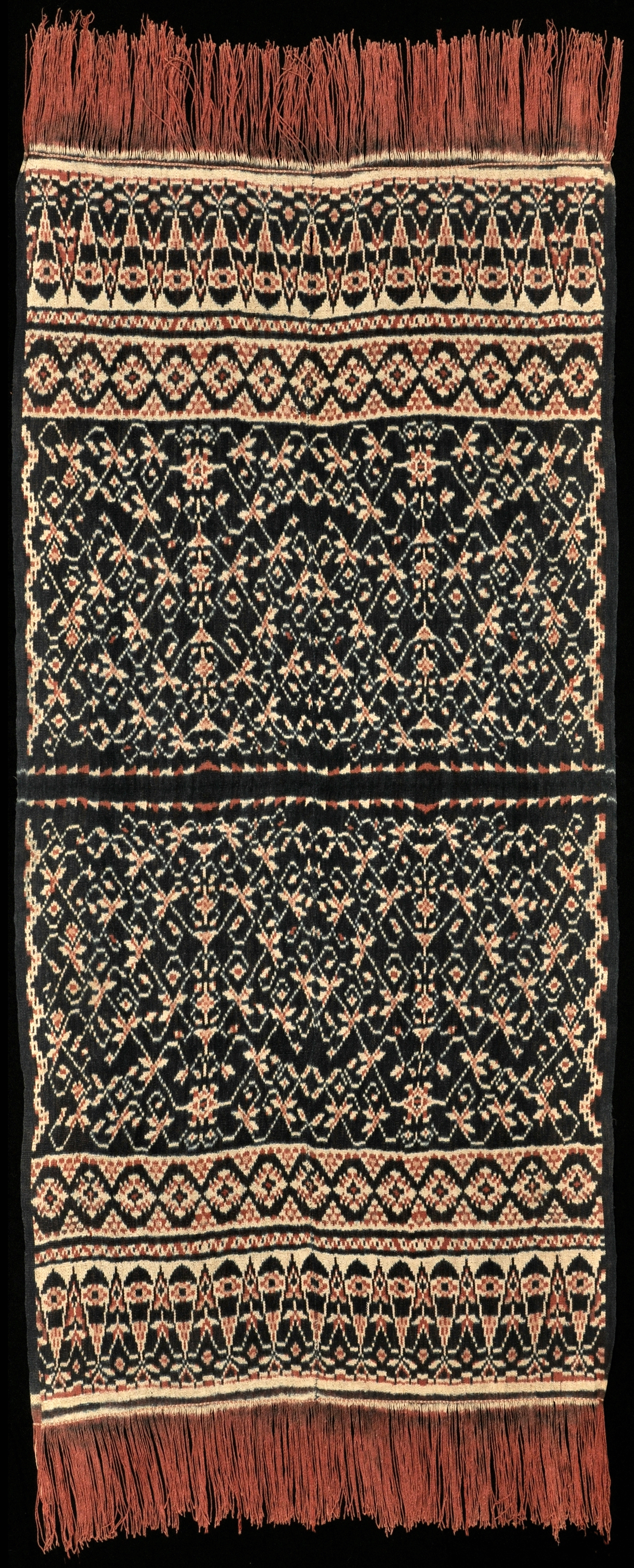| |
 mouse over to magnify mouse over to magnify
| | | | 003 Roti Group, Roti
Lafa (shawl)
| | Locale: | Village unknown. | | Period: | 1930 | | Panels: | 2 | | Design: | Patola inspired shawl with classic dula buna, 'branching flower' motif, tumpal border. | | Size: | 74 x 151 cm (29.1 x 59.4 in) | | Weight: | 515 g (461 g/m2) | | Yarn: | Cotton, hand-spun, medium | | Comment: | Well-preserved example of the type, 'd'un certain âge', that can hold its own among its peers in public collections. It has a with a fine patina, and a pleasant feel that combines the coarseness of fairly loosely woven hand spun cotton with the softness of well-worn material. Reader is invited, in fact urged, to look up the microphotography of certain cloths, especially when the region is known for early adoption of machine made thread. Click on the microscope and enjoy the close-up. | | Background: | Additional information in chapters on Roti Group and Roti. | | Published: | Woven Languages, 2014.
Ikat Textiles of the Indonesian Archipelago, 2018.
| | Compare: | 011 042 012 125 141 | | Sources: | Nearly identical to lafa from before 1930 in Tropenmuseum, Nr. 633-3. Very similar to one from 1900-1905 in Museum of Fine Arts, Boston, Acc.Nr. 27.468. Very similar to Khan Majlis, Indonesische Textilien, Fig. 446. Similar to Penn Museum No. P036B. Also to pieces depicted in Mattiebelle Gittinger, ed., Indonesian Textiles, James J. Fox's contribution, Fig. 6; and Gittinger, Splendid Symbols, Fig. 144. Similar lafa worn by a Rotinese woman, presumably the weaver, on early 20th C. photo in collection Tropenmuseum, below.
| | |
 ©Peter ten Hoopen, 2025
All rights reserved.
|
|


